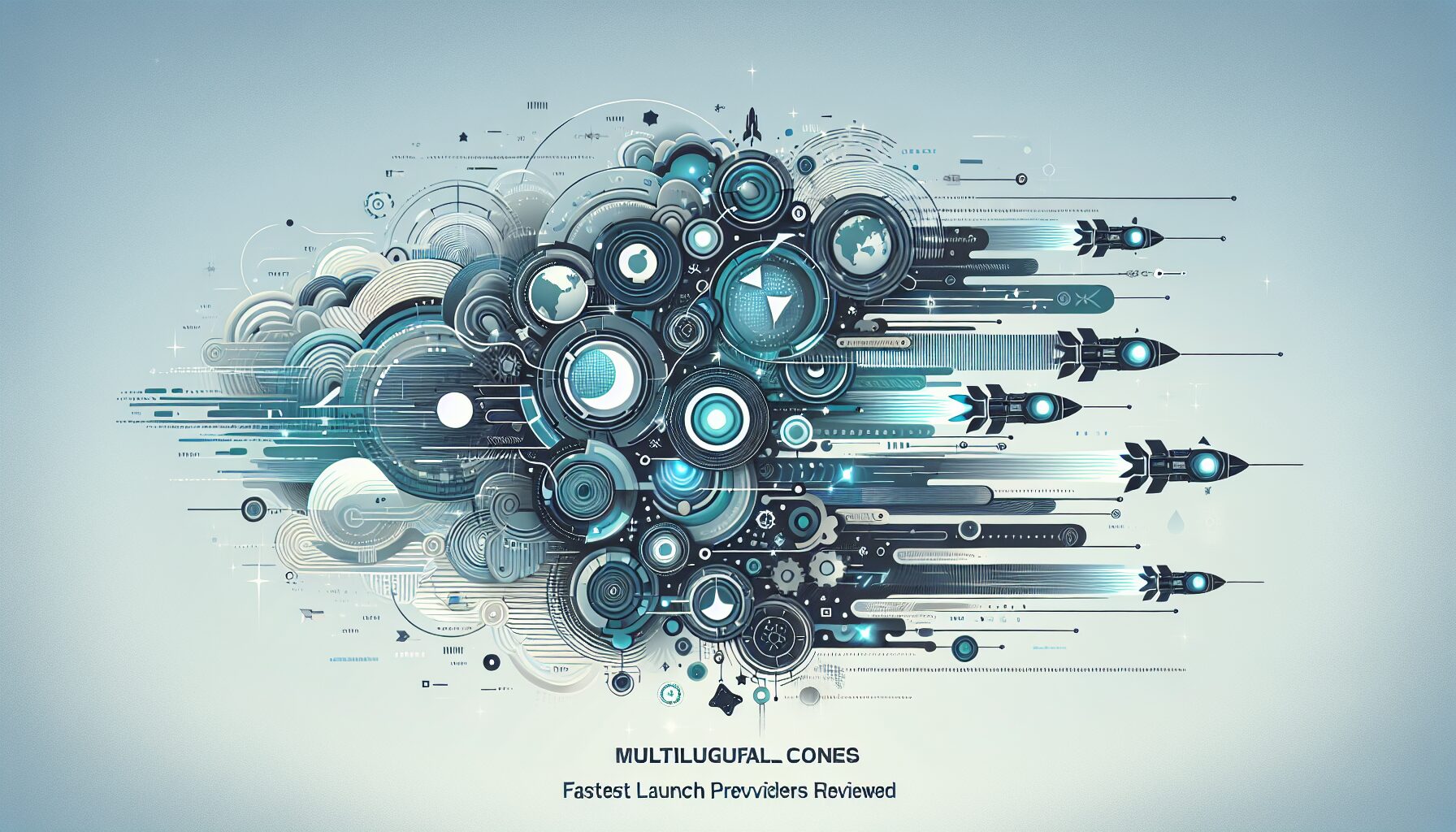About eldris
Clone.Eldris.ai empowers brands to instantly replicate and translate their websites for seamless global expansion. Our automated system delivers SEO-friendly, multilingual clones that launch in days, not months.
In This Article
- Multilingual clones offer fast, scalable localisation for international growth.
- Choose vendors based on speed, CMS compatibility and compliance capabilities.
- Automation aids scale, but manual inputs remain vital for nuanced translation.
- SEO, legal compliance, and user experience can’t be compromised for speed.
- Vendor ROI varies—measure success on market penetration and engagement gains.
Why Multilingual Website Cloning Matters Today
Accelerating Global Reach for Brands and Retailers
Modern enterprises operating online must target audiences across multiple geographies. To achieve this efficiently, multilingual clones have emerged as a powerful solution. These clones are rendered versions of your original website, fully translated and culturally localised, enabling brands to extend their digital presence without rebuilding web hubs from scratch. The translation process is streamlined, and content, UI, and UX elements are mirrored across markets.
Unlike legacy site duplication methods, multilingual clones are supported by robust localisation frameworks, automated translation tools, and CMS integrations that maintain design fidelity across languages. The advantage is twofold: brands go global faster, and user experiences remain consistent worldwide. With the surge in cross-border eCommerce and multicultural digital consumption patterns, deploying multilingual clones is no longer optional—it’s a strategic imperative.

Top Vendors for Fast Multilingual Clone Delivery
Compare Speed, Scope, and Support
Choosing a vendor to deliver multilingual clones swiftly and accurately is critical. Top players such as Weglot, Lokalise, Transifex, and Smartling offer varied service levels—ranging from instant, fully mirrored website clones to deeply localised, region-sensitive adaptations. Some specialise in integration speed via plugins, while others focus on robust enterprise frameworks. The choice often depends on the brand’s CMS, scope of translation, required languages, and scalability targets.
Platforms like Smartling emphasise end-to-end automation with AI-enhanced translation, while Weglot is known for its instant deployment model using a no-code approach. Transifex, on the other hand, excels in developer-centric environments with strong API support. The vendor comparison should include key metrics such as average clone deployment time, number of supported languages, CMS compatibility, and customer support responsiveness. Ultimately, the vendor that aligns closely with your operational needs and content complexity will yield the best ROI.
“Speed to market with multilingual clones is now a tipping point for international digital strategy success.”
Translation Automation vs Manual Localisation
The efficiency of multilingual clone deployment hinges significantly on the method of translation applied. Automation tools have revolutionised this space. AI-powered engines offer real-time translation, maintaining website consistency while eliminating human delays. Google Cloud Translation, DeepL, and Amazon Translate are commonly integrated services providing scalable automated solutions.
Yet, manual localisation still holds value—particularly for regions that demand cultural nuance, regulatory language accuracy, or industry-specific terminology. Marketing copy, legal content, and regionally sensitive imagery require human oversight to mitigate cultural missteps. Hence, a hybrid model is often ideal: leveraging automation for core content while assigning human review to priority segments. Vendors that provide holistic translation management systems allow this flexibility natively, making deployment smoother and more accurate.
Real Deployment Times: What’s the Benchmark?
Timelines for multilingual clone delivery vary based on the vendor, number of languages, and site complexity. However, industry averages have improved dramatically. Basic website clones with up to five language variants can go live within 48 to 72 hours using automation-first platforms like Weglot or Localise. More intricate sites, such as global retail portals with multi-regional inventory and pricing data, take between one to three weeks on full-service platforms.
Benchmarks to track include:
- Initial translation turnaround time
- DNS and domain mapping for localised URLs
- QA testing cycles for design and layout integrity
- Multilingual SEO readiness post-launch
Keeping realistic expectations grounded in the vendor’s published timelines and existing case studies is vital for planning a successful multilingual clone launch campaign.
Feature Checklist for Quick-Launch Cloning Vendors
When evaluating vendors for multilingual clones, here’s a comprehensive feature checklist to ensure accelerated deployment and long-term scalability:
- Automated AI translation integration
- Real-time visual editing interfaces
- Multi-CMS compatibility (WordPress, Drupal, Shopify, etc.)
- Collaboration tools for distributed teams
- Support for language-specific SEO metadata
- Custom domain and subdomain controls
- Change detection and update propagation
- GDPR and region-specific compliance protocols
Only a handful of vendors deliver on all the above. Ensure your choice doesn’t sacrifice quality or compliance just for speed. Refer to Learn more about Fast and Scalable Multilingual Website Deployment for a deep comparison table.
SEO Considerations for Multilingual Cloned Sites
An often underestimated aspect of deploying multilingual clones is search engine optimisation. Functional clones are not sufficient unless properly indexed and visible across localised search engines. Implementing best practices such as hreflang tagging, canonical URLs, and language-specific metadata is absolutely essential.
Additionally, cloned pages must avoid duplicate content penalties. Vendors that auto-implement regional schema markup and handle sitemaps proactively set your global reach up for success. It’s essential that your multilingual clones are not only user-accessible but also search-friendly, aligning locomotively with international growth strategies.
Tools like Screaming Frog and Ahrefs can help audit the SEO integrity of multilingual clones post-deployment. For further best practices, visit Quick voice cloning across languages which contains verified technical SEO recommendations for localised sites.
Compliance and Market Readiness Across Regions
Each target market has different compliance requirements—and merely deploying a multilingual version of your content won’t suffice if local laws are not followed. For example, the EU mandates GDPR adherence, while Canada follows PIPEDA. Brazil’s LGPD and California’s CCPA extend complexity further.
Cloning vendors that understand these diverse requirements often build compliance into their deployment stacks. Cookie banners, data collection disclosures, and express consent mechanisms are standard on their localised rollouts. Beyond legal obligations, market readiness requires cultural vetting. Does the imagery align with the region? Are checkout currencies and units displayed in local norms?
Working with vendors who incorporate regulatory localisation and have region-specific launch templates is a massive asset towards early success abroad.
Pricing Models and ROI Insights
Multilingual clone vendors use varied pricing models. These typically fall into three categories:
- Per-Word or Per-Page Fees – Suitable for static content, but costs grow with site scale.
- Subscription-Based Tiers – Usually includes translation memory tools, plugins, and integration options.
- Enterprise Custom Contracts – For API-heavy deployments or those requiring managed services.
It’s critical to forecast ROI using typical KPIs, such as accelerated regional traffic, bounce rate reduction post-translation, and conversion uplift in newly supported locales. Some case studies suggest localised clones can improve conversion rates by 20–50%, vastly justifying the upfront investment. Providers offering ROI calculators or performance dashboards should be prioritised during vendor selection. For platform reviews, check Read a related article for current pricing insights across popular vendors.
Case Studies: E-commerce Brands Going Global
Consider the case of an e-commerce fashion label based in the UK. After deploying multilingual clones in French, Spanish, German, and Japanese using Weglot, the site saw a 42% increase in non-English web traffic and a 37% uplift in international sales within three months.
Similarly, a SaaS provider used Lokalise to prepare clones in Dutch, Portuguese, and Arabic. By integrating with their React-based frontend, they achieved full deployment in under 10 days, with minimal engineering effort. These case studies underscore that multilingual clone strategies not only broaden reach but also enhance engagement and lead conversion in newly penetrated markets.
Challenges with Instant Translation Tools
While instant cloning sounds ideal, tools that promise auto-translation in minutes often sacrifice contextual appropriateness. Terms and idioms may not convert correctly across languages. More importantly, legal text, CTAs, and culturally sensitive phrases can become misleading when rendered without human oversight.
Another hurdle is structural—not all interactive components or dynamic feeds translate properly with real-time tools. Vendors lacking full content extraction and reinjection pathways can introduce visual breaks or internal misalignments. UX deterioration can impact trust and conversion. Therefore, it’s vital to balance speed with accuracy when evaluating low-latency translation services.
Support, Scalability & CMS Integration Options
Support is paramount in complex multilingual clone rollouts. Vendors vary in their support offerings—from limited chat bots to 24/7 human assistance. Brands expanding rapidly into emerging markets need robust Vendor Success Teams covering language, compliance, and dev support bandwidth.
CMS integration is another vital factor. Leading platforms should offer pre-built plugins for WordPress, Shopify, BigCommerce, Drupal, and headless CMS solutions. An ideal vendor enables rapid onboarding without extensive back-end modifications. Furthermore, scalable infrastructure is mandatory. Your clone platform must grow seamlessly with your content catalogue and customer base.
Final Verdict: Who Wins the Race to Launch?
[CONCLUSION_CONTENT]
In the competitive terrain of multilingual clones, vendors win when they balance speed, accuracy, integration, and support. No single solution fits all, but choosing a platform that aligns with your immediate and long-term global objectives will set the tone for international success. Whether you’re an SMB going multilingual for the first time or an enterprise scaling into APAC and LATAM, your cloning strategy will shape your digital footprint—now and well into the future.
Great guide on compare-multilingual-clone-delivery-vendors – Community Feedback
How quickly can I launch a multilingual website clone?
Some providers enable launch of multilingual website clones within just a few days, thanks to automated translation and deployment tools tailored for rapid expansion. Exact timings depend on site complexity and selected provider packages.
What factors affect clone delivery times for international sites?
Delivery speed depends on the provider’s automation level, the number of languages, integration with e-commerce platforms, and whether SEO and compliance steps are built in from the start.
Which features are essential in multilingual site cloning?
Key features include accurate automated translation, localised checkout, SEO-friendly structures, custom domain support, and tools for ongoing content updates and compliance with local market regulations.










